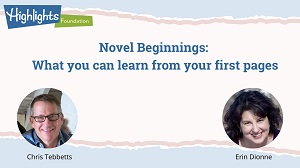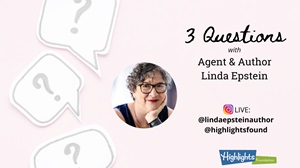Beginnings are important. The opening of a story is what hooks the reader into the world you’ve built, and gets them to engage with your character.
Even before we get to the reader portion of the program, a strong beginning hooks agents, gets the attention of contest judges, and gets editors excited. Beginnings have a lot of work to do. They:
- Introduce the main character and their situation.
- Set up the problem that the book or main character will be dealing with.
- Set the voice or tone of the piece.
- Orient the reader to the world in a fantasy or sci-fi piece.
This is a big list! Beginnings have a heavy lift, which is why I go back to mine over and over again during my drafting and revision processes.
The craft element that I want to focus on regarding beginnings is the idea of The Promise.
The beginning of any story sets up expectations for the reader: This is going to be a mystery, or a horror novel. This book is going to be funny, or sad, or set in a fantastical world with magic. Readers are savvy, and our brains are wired to look for and pick up clues when we enter a story. As we pick up the clues, we build expectations.
The sky is purple at high noon? This is a fantasy.
That guy can fly? There’s magic in this book.
These examples are blatant, but readers’ brains pick up subtle clues, too:
That character keeps fiddling with their hat. Hat is important.
The dog gives a sidelong glance that’s oddly human. Dog is special, maybe magic.
Once those expectations are set, it becomes hard to shake them. This is why going back to revise our beginnings once we reach the end of our drafts is critical: What are we promising our readers?
I explain this at conferences, and inevitably get the person who says, “But I want to surprise my readers! The magic in my book doesn’t get revealed until page 87.”
My response is always this: “Have you ever seen a movie trailer, and then gone to the movie and experienced something totally different? You thought it was going to be funnier, or scary, or…whatever? Remember that feeling of frustration and annoyance? That is the feeling you do not want your reader to have.”
If we have been led to believe that we are reading a realistic fiction novel, and then all of a sudden there’s giant mutant spiders—with no warning, clues, or expectation that they are coming—your reader would likely throw that book across the room. My guess is that this behavior is not what you want from your readership.
In general, we do not like bait-and-switch stories.
Yes, there are exceptions. But…I’ll also add that a lot of the exceptions have actually subtly laid the foundation for that bait-and-switch moment, so you can look back through the beginning of the story and go, “Ahhhh! Yes! THIS was how that was done! I just missed it!”
Our goal as writers is for readers to want to keep reading—we need to make it hard for them to put down that book. It becomes ten times easier for our audience to walk away from a story that is not delivering on their expectations.
Here’s something you can do to identify the promise that your book is making to the reader:
Jot down your vision of the book.
- A psychological thriller that keeps readers on the edge of their seats.
- A sweeping romance that takes readers to another place and time.
- A gothic horror novel that will force readers to keep the lights on at night.
Once we make those promises to our readers, we need to deliver on them by the end of our novels—which we’ll discuss in our sessions. In the meantime, if you clearly identify the promises you’re making, you’ll have readers who are eager to join you on your story’s journey.
Portions of this essay are excerpted from Erin’s book Bad Choices Make Good Stories: Conversations on Writing (Table for 7 Press, 2021).







